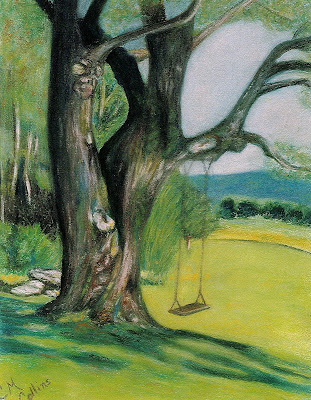Sunday, December 06, 2009
Tuesday, November 03, 2009
Monday, June 01, 2009
The Foundation by C K Williams
The Foundationby C. K. Williams
1.Watch me, I’m running, watch me, I’m dancing, I’m air;the building I used to live in has been razed and I’m skipping,hopping, two-footedly leaping across the blocks, bricks,slabs of concrete, plaster, and other unnameable junk . . .Or nameable, really, if you look at the wreckage closely . . .Here, for instance, this shattered I-beam is the Bible,and this chunk of mortar? Plato, the mortar of mind,also in pieces, in pieces in me, anyway, in my mind . . .Aristotle and Nietzsche, Freud and Camus and Buber,and Christ, even, that year of reading “Paradise Lost,”when I thought, Hell, why not? but that fractured, too . . .Kierkegaard, Hegel, and Kant, and Goffman and Marx,all heaped in the foundation, and I’ve sped through so oftenthat now I have it by heart, can run, dance, be air,not think of the spew of intellectual dust I scuffed upwhen in my barely broken-in boots I first clumped throughthe sanctums of Buddhism, Taoism, Zen, and the Areopagite,even, whose entire text I typed out—my god, why?—I didn’t care, I just kept bumping my head on the lintels,Einstein, the Gnostics, Kabbalah, Saint This and Saint That . . .2.Watch me again now, because I’m not alone in my dancing,my being air, I’m with my poets, my Rilke, my Yeats,we’re leaping together through the debris, a jumble of wrack,but my Keats floats across it, my Herbert and Donne,my Kinnell, my Bishop and Blake are soaring across it,my Frost, Baudelaire, my Dickinson, Lowell and Larkin,and my giants, my Whitman, my Shakespeare, my Danteand Homer; they were the steel, though scouring as I wasthe savants and sages half the time I hardly knew it . . .But Vallejo was there all along, and my Sidney and Shelley,my Coleridge and Hopkins, there all along with their music,which is why I can whirl through the rubble of everything else,the philosophizing and theories, the thesis and anti- and syn-,all I believed must be what meanings were made of,when really it was the singing, the choiring, the cadence,the lull of the vowels, the chromatical consonant clatter . . .Watch me again, I haven’t landed, I’m hovering hereover the fragments, the remnants, the splinters and shards;my poets are with me, my soarers, my skimmers, my skaters,aloft on their song in the ruins, their jubilant song of the ruins.
Wednesday, September 17, 2008
Thursday, November 01, 2007
Wednesday, May 09, 2007
Nothing Gold Can Stay
Nothing Gold Can Stay
Robert Frost
Nature's first green is gold,
Her hardest hue to hold.
Her early leaf's a flower;
But only so an hour.
Then leaf subsides to leaf.
So Eden sank to grief,
So dawn goes down to day.
Nothing gold can stay
Such a short poem that says so much. Beauty is fleeting comes to mind first. The gold metaphor - could it mean gold (as in the currency), only gives us temporary and/or false pleasure? Then there's the reference to Eden - the fall from The Garden, "sinking to grief." Could it mean the Western Judeo-Christian view of Adam & Eve being banished from The Garden and the subsequent domination over nature???
Robert Frost
Nature's first green is gold,
Her hardest hue to hold.
Her early leaf's a flower;
But only so an hour.
Then leaf subsides to leaf.
So Eden sank to grief,
So dawn goes down to day.
Nothing gold can stay
Such a short poem that says so much. Beauty is fleeting comes to mind first. The gold metaphor - could it mean gold (as in the currency), only gives us temporary and/or false pleasure? Then there's the reference to Eden - the fall from The Garden, "sinking to grief." Could it mean the Western Judeo-Christian view of Adam & Eve being banished from The Garden and the subsequent domination over nature???
Labels: Poetry
Monday, March 05, 2007
Marc Chagall's Three Candles
 From Amazon.com:
From Amazon.com:Marc Chagall (1887-1985) epitomized the "painter as poet" with work that was steeped in mythology and mysticism, portraying colorful dreams and folktales deeply rooted in his Russian Jewish origins. No 20th-century artist approached him in popularity.
Consider his most famous painting: The three candles, where the lovers couple defy not only the gravity 's acceleration, but are by themselves a real breakthrough with the oppressed human beings. The sad harlequin and the tragic red, the couple is just so far from being happy, they weep the invisible presence of the implacable menace.
From Chagallpaintings.org
Common Themes: Upon close inspection you will notice that Chagall has incorporated many of his trademark themes here, such as young love and religious icons, while mixing in his abstract style. The background features many angelic-like figures floating around. The young couple appears to be rising up with the angels, which reflects heavily on Chagall’s appreciation of love, and the respect and dignity that he affords it.
Religion: The young lovers themselves are focusing on the candles, which have definite religious undertones, conveying a religious perspective for their relationship. The land and small town in the background are presented in a fashion typical of Marc Chagall paintings: small, on a hill, and painted with function rather than form. While the center of the painting; the young couple and the candles, are shown in a clear and targeted manner. All other elements are revealed in a dreamlike state, with little detail and an abstract style.
Labels: Chagall




